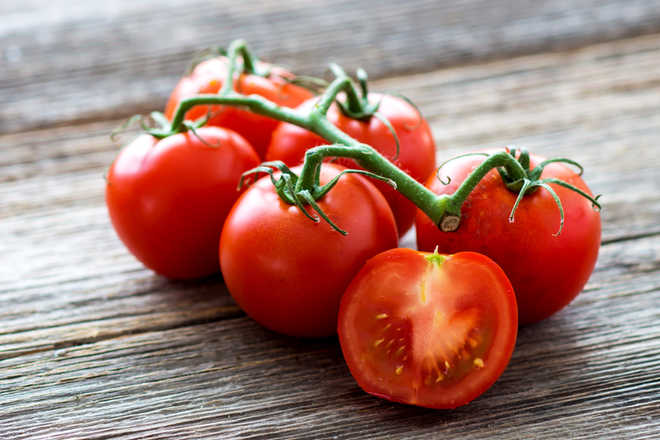London, May 14
Tomato extracts can inhibit the growth and malignant cloning of stomach cancer cells, according to a new study that paves the way for novel therapies to treat the deadly disease.
Researchers analysed whole tomato extracts for their ability to tackle gastric cancer cell lines.
“Their antitumoral effect seem not related to specific components, such as lycopene, but rather suggest that tomatoes should be considered in their entirety,” said Daniela Barone, researcher at the Oncology Research Centre of Mercogliano (CROM) in Italy.
Extracts of San Marzano and Corbarino tomato varieties were able to inhibit the growth and cloning behaviour of malignant cells.
Treatment with the whole tomato extracts affected key processes within the cells hindering their migration ability, arresting cell cycle through the modulation of retinoblastoma family proteins and specific cell cycle inhibitors, and ultimately inducing cancer cell death through apoptosis.
“Our results prompt further assessment of the potential use of specific nutrients not only in the cancer prevention setting but also as a supportive strategy along with conventional therapies,” said Antonio Giordano, professor at the University of Siena in Italy.
“Distinct species may exert different effects, in different stages of a certain neoplasm,” said Barone.
Gastric cancer is the fourth most common type of cancer worldwide and has been associated with genetic causes, Helicobacter pylori infection, and eating habits, such as consumption of smoked and salted food.
Tomatoes are consumed worldwide and are a staple of the Mediterranean diet, which is popularly thought to lower cancer risk.
Various tomato components have also been analysed for their ability to counteract tumour growth in experimental systems, although few studies have analysed the effects of tomatoes in their entirety.
The research was published in the Journal of Cellular Physiology.
Breaking News
 Driving Naari Programme launched in Chandigarh
Driving Naari Programme launched in Chandigarh Punjab farmers reaping benefits of Mann Government’s crop diversification initiatives
Punjab farmers reaping benefits of Mann Government’s crop diversification initiatives Punjab and Kerala Join Hands to Address NRI Concerns
Punjab and Kerala Join Hands to Address NRI Concerns Macron refuses French Prime Minister’s resignation after chaotic election results
Macron refuses French Prime Minister’s resignation after chaotic election results Modi lands in Russia for first visit since Ukraine offensive
Modi lands in Russia for first visit since Ukraine offensive Saudi Arabia approves granting citizenship to global experts under Vision 2030
Saudi Arabia approves granting citizenship to global experts under Vision 2030 Vigilance arrests Panchayat Secretary, former Sarpanch for embezzlement in Panchayat funds
Vigilance arrests Panchayat Secretary, former Sarpanch for embezzlement in Panchayat funds Housing crisis in Canada forcing residents to move out of pricier cities: Poll
Housing crisis in Canada forcing residents to move out of pricier cities: Poll Historic Milestone: Canada Appoints Its First Female Chief of Defense
Historic Milestone: Canada Appoints Its First Female Chief of Defense Victory parade of T20 World Cup-winning Indian cricket team concludes in Mumbai
Victory parade of T20 World Cup-winning Indian cricket team concludes in Mumbai Maximizing impact of Aadhar in Punjab
Maximizing impact of Aadhar in Punjab Amritpal Singh to take oath as Khadoor Sahib MP on July 5
Amritpal Singh to take oath as Khadoor Sahib MP on July 5




































